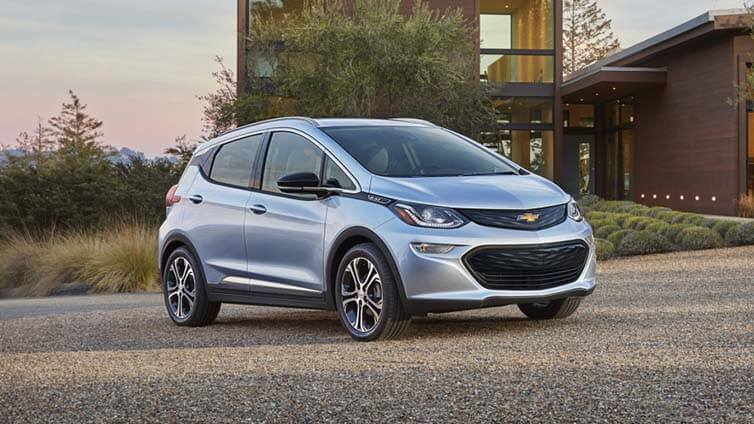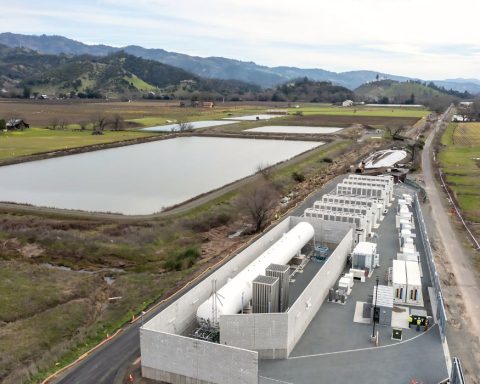The most notable fact about Corporate Knights’ new Clean Cars rankings is that some form of electric power fuels almost all of the winning vehicles.
The rankings, derived from the 2018 Fuel Consumption Guide published by Natural Resources Canada (NRCan), rate environmental performance among all vehicles within each of the guide’s 12 categories.
Seven of the top scorers run solely on battery power while three others are conventional or plug-in hybrids that combine battery propulsion and internal combustion. Vehicles operating exclusively on internal combustion lead only in the two categories without electrified vehicles – small and standard pickup trucks.
The results represent a remarkable shift: In just two decades since the Toyota Prius hybrid was introduced in Japan and less than 10 years since the first all-electric Nissan LEAF went on sale, battery power has moved from a diehard environmentalist niche into every car class and even minivans and SUVs.
This does not mean, yet, that we are witnessing the triumph of electric vehicles; they still account for a tiny fraction of sales. Still, our rankings show electrification is a key strategy for automakers to meet increasingly stringent fuel-economy and greenhouse-gas-emission standards. Not only are EVs emissions-free but their manufacturers, in return for producing them, also get credits that lower the mandatory targets for the rest of their vehicles.
The standards, introduced in 2012 in the United States and copied by Canada and several other nations, require steady improvements in fuel economy until 2025, when each automaker’s passenger vehicle fleet is to average 55.2 miles per U.S. gallon, or 4.3 litres per 100 kilometres. Because of the credits for EVs as well as others for “green” technologies, such as the use of safer refrigerants, in internal-combustion vehicles, the estimated actual mileage will be about 36 mpg, or 6.5 litres/100. While some might question the credit system, created to ensure automakers’ consent to the standards, its result would be a significant cut in fuel consumption and, for consumers, unprecedented choice.
The fate of the American standards is unclear now that the U.S. Environmental Protection Agency (EPA), urged on by automakers, has undertaken to ease those set for 2022 to 2025. California imposes its own rules, which were the template for the national program, and it vows to challenge any rollbacks. Thirteen other states and the District of Columbia follow California’s lead. Since together they account for one-third of the U.S. vehicle market, the stage seems set for a tough battle between competing regulations.
Canada will likely continue to follow whatever the Americans finally decide. But the European Union, China, South Korea and other leading vehicle production centres have imposed standards similar to the current EPA targets, and it’s not clear how they, and their automakers, would respond to changes in the U.S.
Despite the uncertain future, the NRCan guide and our Clean Cars rankings illustrate how progress has been, and will continue to be, achieved.
The guide’s 12 size classes include two-seat, sub-compact; compact, mid-size and full-size cars; minivans; small and standard pick-up trucks; small and mid-size station wagons; and small and standard SUVs. For each vehicle it lists engine size and number of cylinders, whether automatic or manual transmission, fuel type, fuel consumption and annual fuel cost, carbon emissions at the tailpipe and a rating for contribution to smog.
The all-important fuel consumption ratings are based on tests conducted by automakers under controlled laboratory conditions intended to simulate urban, suburban and highway driving. As NRCan explains: “It would be difficult to drive every model of new vehicle on the road to measure fuel consumption, and almost impossible to consistently duplicate on-road testing results because many variables can affect a vehicle’s performance.”
The test results are, typically, about 25 per cent better than what motorists will achieve under real-world conditions, where terrain, road surface, wind and other weather conditions, and driving style all impact the amount of fuel consumed. Even so, they allow useful comparisons among vehicles.
Neither the guide nor our rankings considers a vehicle’s initial cost, performance or total carbon footprint, including the environmental impacts of mining, production, transportation, extracting and refining fossil fuels, and generating and storing electricity.
We analysed a total of 1,047 vehicles, comparing each vehicle with all others in its NRCan classification. The 12 winners are those scoring highest in their respective class.
Results for the 2018 Canadian Clean Cars Guide:
[masterslider id=”31″]–
–
–
We allotted a possible 50 per cent of the final scores to annual fuel cost; a gauge we considered more meaningful than fuel consumption for consumers. Low CO2 emissions and contribution to smog, as well as longer range between fuelling stops, were each worth up to 15 per cent. The remaining five per cent was allocated to recharge times. We excluded vehicles that failed to achieve a safety rating of at least 4 out of 5 from the U.S. National Highway Traffic Safety Administration.
Electric vehicles got top marks for their zero emissions and smog impact, and far lower fuel costs. On the other hand, internal-combustion vehicles got perfect scores for recharge time, reflecting the fact you can fill a gas tank in minutes while it can take hours to recharge a battery.
Electrification might be the poster technology for reduced fuel consumption and emissions. But since the vast majority of motorists still opt for internal combustion, automakers must improve there, too.
Going through past NRCan guides reveals a key change: Engines are, on average, getting smaller. For example, in 2010, you could buy a 3.6-litre, six-cylinder Chevrolet Malibu sedan or a 3.5-litre, six cylinder Honda Accord. For 2018, the largest engine available for either is a 2.0-litre with four cylinders.
In 2010, the smallest engine available on the standard version of Ford’s popular F-150 pickup truck boasted 4.6 litres and eight cylinders. The largest was a 5.4-litre, eight, and by 2012 it had grown to 6.2. Now, the smallest is a 2.7-litre six; the biggest, a 5.0-litre eight.
With these size reductions came lower fuel consumption and CO2 emissions.
To squeeze acceptable performance from smaller power plants, manufacturers have adopted aluminum, plastics and other lighter-weight materials; more aerodynamic designs; devices that de-activate some cylinders under light load or shut off and restart the engine at stops; and sophisticated engine and transmission technologies with features such as turbo-charging and computer-controlled fuel injection spray patterns.
Mazda, the smallest Japanese carmaker, claims a 20-per-cent fuel-consumption gain from its new SkyActiv-X engine, which burns gasoline in the type of compression ignition system until now reserved for diesel engines.
However, such improvements are being undermined by a shift to vehicles in larger size classes, particularly pickup trucks and SUVs, which now represent nearly two-thirds of the U.S. market.
The result, as reported by the University of Michigan Transportation Research Institute, is that the average fuel economy of all new cars and light trucks sold in the United States has stalled after years of steady advances. In October 2007, when the institute began keeping records, the average was 20.1 mpg, or 11.7 litres per 100 kilometres. By summer 2014, the number had improved to 25.5 mpg, or 9.2 litres/100. Since then, it has dropped and as of last December was down to 25.0 mpg, or 9.4 litres/100.
The university’s Eco-Driving Index, which estimates the average monthly emissions of greenhouse gases generated by an individual U.S. driver, has followed a similar pattern.
In this complex environment of good news and challenges, our Clean Cars winners stand as clear evidence we can do much better if we embrace the change they represent.







